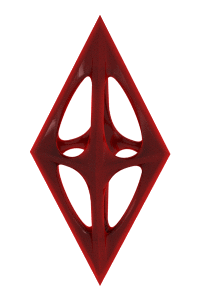Turn, Turn, Turn, Residential House by Hisanori Ban |
Home > Winners > #39313 |
 |
|
||||
| DESIGN DETAILS | |||||
| DESIGN NAME: Turn, Turn, Turn, PRIMARY FUNCTION: Residential House INSPIRATION: The house is located in a residential district, Japanese typical housing area. After the World War II, Japanese houses have scraped and built, these life span ware on the average 30years without strength of the structure. For improvement of the background, the house needs mutability for the family objectives at those times with social changes, and also needs adaptability for thermal environment. Eventually the house which has mutability and adaptability gets sustainability by these all plots. UNIQUE PROPERTIES / PROJECT DESCRIPTION: The house is composed by hybrid, the reinforced concrete and wooden structure. Performance of the house was enhanced by integration of structural and environmental design for long life and comfortable life. Wooden rooms are surrounded by a spiral slope and an external wall which are made of reinforced concrete. Closing light weight walls which partition off every room, it is not only keeping privacy but also comfortable temperature by making an air layer. OPERATION / FLOW / INTERACTION: In spite of three-storied house, inhabitants are possible to walk on a gentle, 1/10 slope almost like a flat house. The slope creates horizontal interrelation between upper floor and under floor. On the other hands, the slope functions as improvement for good environment. Opening upper parts of exterior windows, the slope is due to generate buoyancy-driven ventilation into the tornado. In fact, the peak of heating expenses is low late, almost half compared with same housing volume. PROJECT DURATION AND LOCATION: The project started in 2013 and finished in 2014. The house is located in Aichi prefecture, Japan. FITS BEST INTO CATEGORY: Architecture, Building and Structure Design |
PRODUCTION / REALIZATION TECHNOLOGY: The hybrid, RC and Wooden structural system has various advantage of sustainability. The RC slope provides not only lighten physical burden but also structural durability. This structural system promotes renovation and extension works because the durability of the RC structure which withstands horizontal force of an earthquake allows wooden structure to work easily and flexibly. In addition, the wooden structure has possibility to set up every height because of the encircled spiral slope. SPECIFICATIONS / TECHNICAL PROPERTIES: Gross area 212.56 square meters. Building Height 9.950 m. Three Story Materials Exterior Wall, Concrete and Urethane Coating ,Roof, FRP Waterproof Coat Interior Wall, Plaster and AEP, Veneer Ceiling, Wooden Structure Exposing, Veneer , Floor Mortal, Solid Wooden Floor TAGS: Turn,Turn,Turn, Japanese architecture, Japanese house, Spiral, Slope, Hybrid structure, Air layer, Buoyancy-driven ventilation, Tornado, bandesign, Hisanori Ban RESEARCH ABSTRACT: In recent years, Japanese housing back ground, short life span has been getting considerable attention. Thus, dividing the structure, hybrid structure was defined by the material selections as stable things and changeable things. As a result, the plot of the designing method lead to get sustainability and illuminate inhabitant’s life for future. CHALLENGE: This hybrid structural system is not existing system. In the Japanese building standard act of RC structure, a structural slab is required to each floor at least 1 m wide. Thus the slope has 1 m wide. On the other hands, the slope meets the criteria in the shortest long because of the spiral. Remarkable design activity in this project is realization of the rational and reasonable structure. The system creates various possibilities for inhabitant life fitting to the future society. ADDED DATE: 2015-02-22 05:41:08 TEAM MEMBERS (5) : Principal architect and design director: Hisanori Ban bandesign, Designer: Hisanori Ban,Yasutaka Shinkai bandesign, Structural Designer: Takao Michikura IIJIMA Structural Design Office, Construction Company: Aisan Kensetsu Takayoshi Arao and IMAGE CREDITS: Image#1: Shigetomo Mizuno,2014 Image#2: Shigetomo Mizuno,2014 Image#3: Shigetomo Mizuno,2014 Image#4: Shigetomo Mizuno,2014 Image#5: Kazumoto Terashima,2014 |
||||
| Visit the following page to learn more: http://www.bandesign.jp | |||||
| AWARD DETAILS | |
 |
Turn, Turn, Turn, Residential House by Hisanori Ban is Winner in Architecture, Building and Structure Design Category, 2014 - 2015.· Read the interview with designer Hisanori Ban for design Turn, Turn, Turn, here.· Press Members: Login or Register to request an exclusive interview with Hisanori Ban. · Click here to register inorder to view the profile and other works by Hisanori Ban. |
| SOCIAL |
| + Add to Likes / Favorites | Send to My Email | Comment | Testimonials | View Press-Release | Press Kit |
Did you like Hisanori Ban's Architecture Design?
You will most likely enjoy other award winning architecture design as well.
Click here to view more Award Winning Architecture Design.








